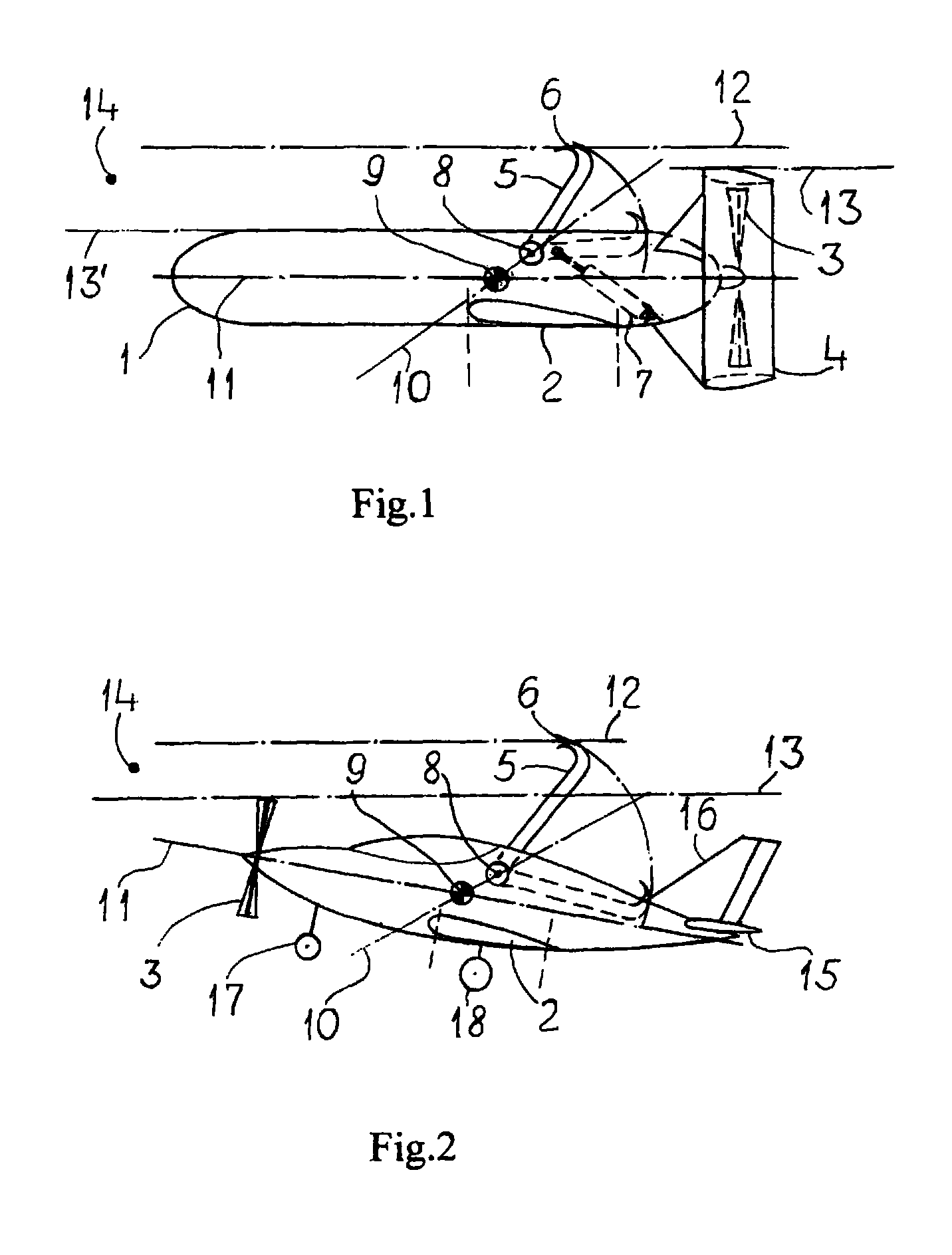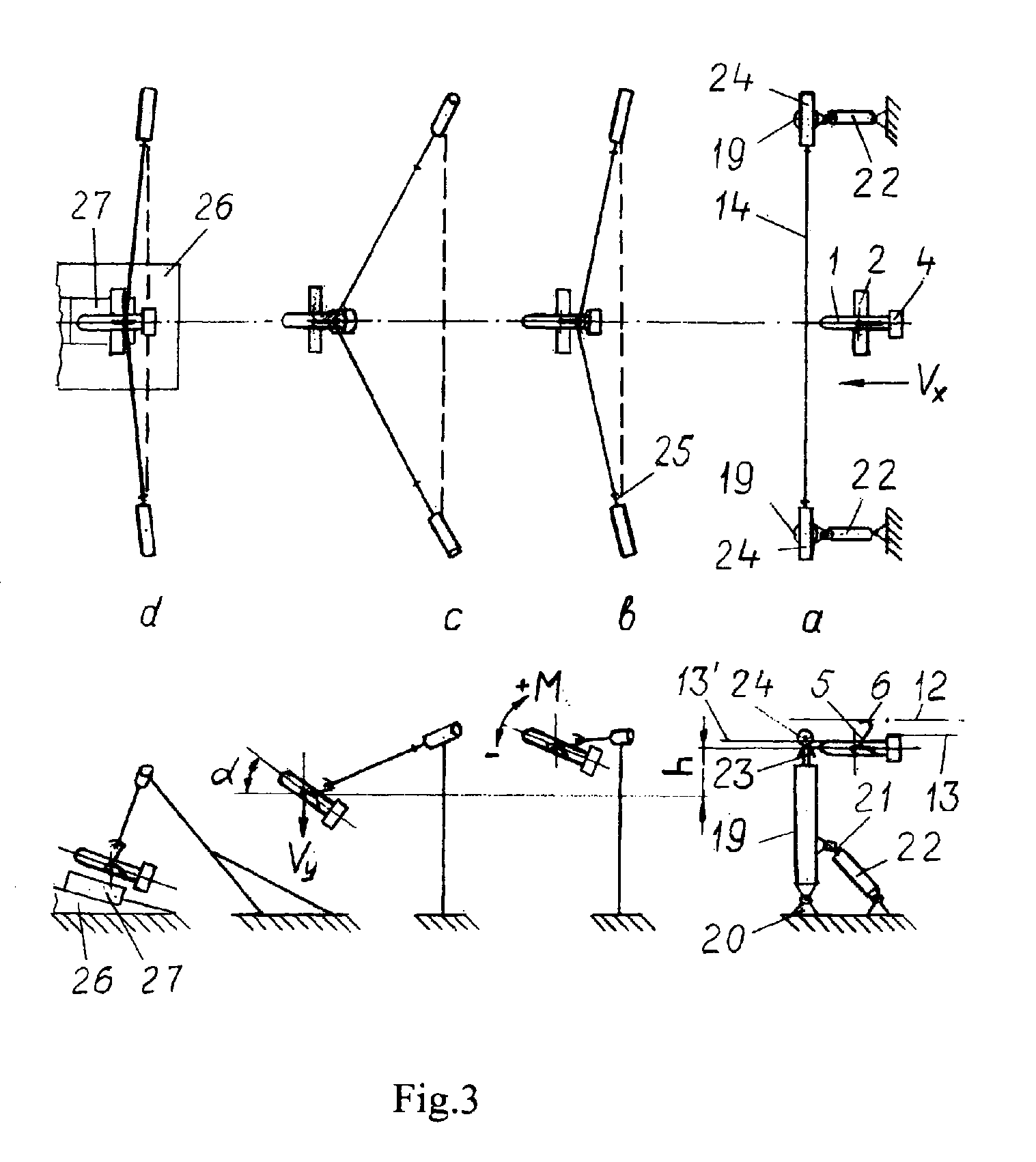Aircraft
a technology for aircraft and support devices, applied in the field of aircraft construction, can solve the problems of difficult piloting, complexity and cost of aircraft with support devices, unsuitable for such cable landing techniques, etc., and achieve the effect of improving the reliability and useful load of aircraft and reducing costs
- Summary
- Abstract
- Description
- Claims
- Application Information
AI Technical Summary
Benefits of technology
Problems solved by technology
Method used
Image
Examples
Embodiment Construction
[0033]Referring now to the drawings in detail, and initially to FIG. 1, where an unmanned aircraft is built on a normal aerodynamic configuration. The aircraft has a fuselage 1 and a lifting low wing 2 located in the center fuselage. In the aft fuselage there is a pusher propeller 3 installed into a cylindrical stabilizer fin 4. Aboard the aircraft there are an arresting hook 5 with a grip portion 6, a shock-absorber 7 (for example, as in every car) and an arresting hook drive for a hook motion from the removed position (shown by dash lines) into the deployed position (shown by solid lines). This drive is not shown to avoid shading of the main elements).
[0034]The arresting hook 5 is mounted on the aircraft capable of rotating around an axis 8 (shown by a circle with a point) laying transversely of the aircraft in parallel to a body transverse (another name “lateral”) axis. Axis 8 is located within the longitudinal expanse of the mean aerodynamic chord, and above and behind the cente...
PUM
 Login to View More
Login to View More Abstract
Description
Claims
Application Information
 Login to View More
Login to View More - R&D
- Intellectual Property
- Life Sciences
- Materials
- Tech Scout
- Unparalleled Data Quality
- Higher Quality Content
- 60% Fewer Hallucinations
Browse by: Latest US Patents, China's latest patents, Technical Efficacy Thesaurus, Application Domain, Technology Topic, Popular Technical Reports.
© 2025 PatSnap. All rights reserved.Legal|Privacy policy|Modern Slavery Act Transparency Statement|Sitemap|About US| Contact US: help@patsnap.com



